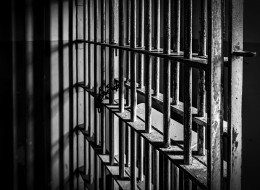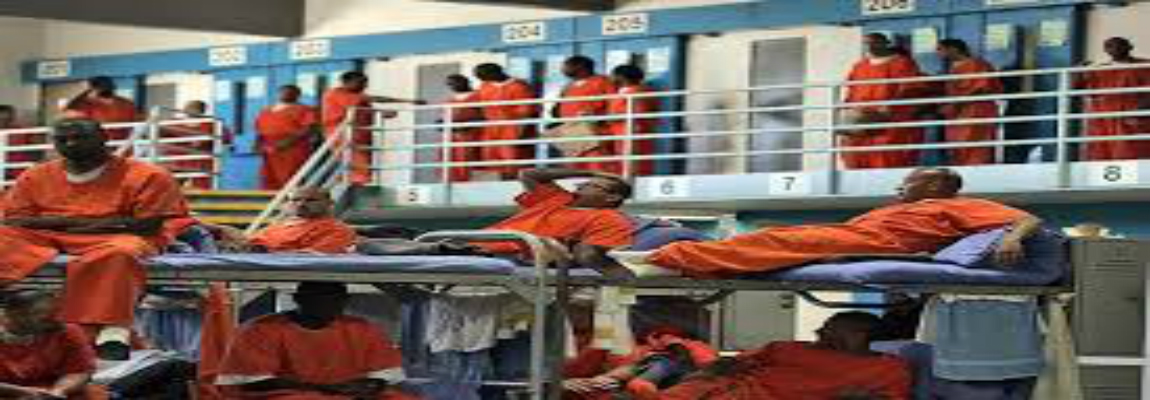America’s Racial Caste System and the School-to-Prison Pipeline
 A friend and brother in the struggle to enlighten, elevate and empower blacks in America and abroad posted a link to the article by Alexander Reynolds in the Huffington Post (See at bottom), with the caption: Agree? Disagree? The initial impetus to respond in a succinct fashion gave way to the need to engage the enigmatic conundrum presented in this article in a slightly more in-depth fashion. I address both, the school-to-prison pipeline and mass incarceration as institutional machinations that facilitate the grand ideal of the racial caste in America in my book, The Mis-education of Black Youth in America. The school-to-prison pipeline is more than some conspiracy theory manufactured within the overactive imaginations of a few.
A friend and brother in the struggle to enlighten, elevate and empower blacks in America and abroad posted a link to the article by Alexander Reynolds in the Huffington Post (See at bottom), with the caption: Agree? Disagree? The initial impetus to respond in a succinct fashion gave way to the need to engage the enigmatic conundrum presented in this article in a slightly more in-depth fashion. I address both, the school-to-prison pipeline and mass incarceration as institutional machinations that facilitate the grand ideal of the racial caste in America in my book, The Mis-education of Black Youth in America. The school-to-prison pipeline is more than some conspiracy theory manufactured within the overactive imaginations of a few.
The path from the public educational system to the prison system, especially for the African American male, is lucidly and distinctly outlined in a number of well respected studies. Michelle Alexander laid it bare in her 2010 work, The New Jim Crow: Mass Incarceration in the Age of Colorblindness. Dr. Umar Johnson gave it significant attention in his work, the Psycho-Academic Holocaust, and Dr. Joy DeGruy grappled with it in her evaluation of the perpetuation of psychological trauma among the descendents of American slaves in Post Traumatic Slave Syndrome.
Young African Amerian Boys are drafted into a process in which they are systematically alienated from the educational process through the use of the special education and ADHD designations that can be assigned to them as early as age five. These designations are often accompanied by the use of psychotropic drugs. Although there is no scientific evidence to corroborate any postulation or presupposition that European-American males are inherently more intelligent than African American males, African American males are four times more likely to be diagnosed as being “intellectually deficient” — the new term coined by President Obama to replace the more negatively perceived term “mental retardation” — than their European American counterparts. Additionally, European-American males are four times more likely to be designated as being “mentally gifted.”
When this process of alienation is conjoined with the criminalization of natural teen behavior that has been historically dealt with through internal policy and enforcement within the educational system, it creates the perfect storm through which those whom the system targets are primed to leave the system prior to graduating, which increases the chance of becoming incarcerated, as an adult, exponentially.
There are two primary ways that these young boys will leave the educational system. They will either drop out due to frustration and alienation, or they will be removed by becoming involved in the criminal process as a student. In other words, the criminalization of such acts as willful disobedience, truancy, talking back to teachers, etc, means that the student could easily find themselves in the juvenile justice system, which is a mechanism of the school-to-prison pipeline. During a single year, 2.1 million youth under the age of 18 are arrested in the United States, and approximately 1.7 million of these cases are adjudicated in the juvenile court system. Additional statistics reveal that once a child has entered the juvenile justice system, they are as much as five times more likely to end up in an adult prison.
To gain a lucid perspicacity of the dynamic at play here, it is important to frame the ideology of the existence of a school-to-prison pipeline in the proper context. While the Huffington Post article leaves a lot to be desired in addressing the issue, one element that is identified in the article is the use of fear to justify the criminalization of certain behaviors that have historically been considered administrative issues in the public education system. What this means is that many of the offenses for which youth are arrested and introduced into the juvenile justice system for are what are known as “status offenses,” which means that they are not innately criminal offenses. They are only considered a criminal offense based on ther age or status as a student of the individual. Things such as truancy, underage drinking and willful disobedience are now arrestable offenses that can entangle youth in a system that can increase their chance of being consumed by the mass incarceration machine.
The way that fear is used is to convince parents and community leaders that the police presence in the school is to reduce the possibility of another “Columbine” incident, but what we are seeing is more incidents like the one in South Carolina recently, where a police officer, carrying the title of “resource officer,” brutally assaulted a 16-year-old black girl for failing to put away her cell phone. Without the presence of video to document this incident, it is likely that this young girl’s arrest could have very easily ended with her being charged with assaulting a police officer.
One area in which Alexander Reynald’s article proved to be conceptually anemic was the manner in which he framed it. The criminalization of teen behavior, and the subsequent school-to-prison pipeline is about much more than addressing the fear of school shootings. There was no mention of the Private Prison Industrial Complex, a powerful force that has significantly influenced active criminalization and sentences laws. The Private Prison Industrial Complex is the descendent of convict leasing — the immediate answer to the emancipation of African slaves in America. It was America’s modality for continuing to profit off of the free labor provided by slaves. At the end of the day, it is always associated with profit and wealth.
While the prison population is made up of more than African Americans, it cannot be ignored that black men are disproportionately represented in prison. Blacks, collectively, only make up 13 percent of the American population, while black men make up 51 percent of the prison population. There is a complex dynamic in play that influences this statistic, and it is so convoluted that it would be counterproductive to attempt to address it here, but I will suggest that social engineering is at play — through a well devised, multi-structural edifice that influences blacks in all nine areas of human activity which are economics, education, entertainment, labor, law, politics, religion, sex and war. In my doctoral dissertation, I examined the influence of cognitive distortions on the social mobility and mental health of blacks as a collective, and there are literally mechanisms in play that are designed to negatively impact blacks in each of these areas. These mechanisms represent the epidemy of social engineering.
I would say that Michelle Alexander is one of the latest scholars to reignite the discussion of a well-formed racial caste in American that is systematically executed via institutional mechanisms like the school-to-prison pipeline. The question is not whether the school-to-prison pipeline is institutional racism. The question is: What are African Americans going to do about it? ~ Dr. Rick Wallace, Ph.D.
The School-to-Prison Pipeline Is Institutional Racism

What is the school-to-prison pipeline?
The school-to-prison pipeline is a no-nonsense trend in American education, where children are directed straight from the classroom and into the bureaucratic clutches of the criminal justice system.
The phenomenon manifests itself in disciplinary practices and zero-tolerance policies that criminalize unruly behavior and minor infractions such as truancy, graffiti or violating a school dress code. Not only that, it involves the presence of security guards, and police on campus, breaking up trivial playground fights with a billy-club and a taser.
Gone are the days of the blackboard jungle, when you could give your paper tiger of a schoolmaster some delinquent lip and get away with it. These days, interrupting teacher during class might get you pepper sprayed and hauled off to jail in full restraints to face the full wrath of the juvenile justice system. Whatever happened to detention after school? It got farmed out to the cops. Unbelievable? No sports fans, only in America!
Where did these zero-tolerance policies of zero-sense come from? Fear of Columbine-style massacres ushered in the modern era of paranoia and punishment in the classroom. Now the open halls of education lead to the closed doors and barred grilles of the prison cell. School has become a police state and a halfway house to jail. It is a great act of violence committed against youth by adults.
Little surprise that many kids caught in the school-to-prison pipeline come from low-income families; have learning disabilities or histories of abuse and neglect. Indeed, they are the very ones who might benefit from a well-rounded education. Instead, they are alienated, excluded, criminalized and written off by society.
So, what exactly is this school-to-prison pipeline? Simple: it’s just another term for institutional racism and incarcerating disadvantaged African-American schoolchildren instead of educating them. It’s happening right now, every day, in every town and city in America, and yet there is an absence of public outrage.
Jim Crow in the classrooms of 21st Century America, surely not? Yes, unfortunately. Young black kids, males especially, have always been at threat of punishment by unhinged authority figures afraid of school violence. The figures are shocking. Andracial disproportionality in the school-to-prison pipeline is a black and white fact. But black, white or whatever, it’s an aberrant policy and practice to criminalize children and pollute the future waters of society.
Moreover, the whole thing gives you pause to wonder, whatever happened to the social contract between teacher and parent in public schools? Black, white or whatever, we send our kids on good faith to the cherished institution of school, hoping that they will exit the experience fully qualified for the rigors of a sophisticated, ever changing world. We don’t tend to think of school as the problem itself.
No parent wants to send his or her child to an environment that isn’t safe and secure. But no parent would think of school as a backward meat grinder that fails kids and puts them in boot camp. So much for the legal doctrine of in loco parentis, but thanks all the same for the miscarriage of education, and the lesson our kids will never forget.
Every year, the U.S. spends $10,500 per child on education and $88,000 on each child incarcerated. Sixty-six percent of children who have been incarcerated never return to school. The U.S. incarcerates five times more children than any other nation state in the world. Is this the best that America can offer the child in the 21st Century?
“Let us reform our schools,” said John Ruskin in 1862, “and we shall find little reform needed in our prisons.” He wasn’t wrong. Throwing kids in jail ruins lives and makes things worse all round for the family. It’s time to lay down the gavel on criminalizing youth and make school the best days of their lives. It’s a better investment for society in the long run.

